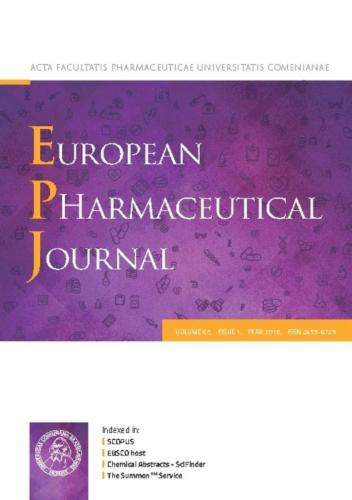Investigating accumulation of budesonide and tacrolimus in an ex vivo porcine oesophageal model: Translational potential for local application of drugs to treat eosinophilic oesophagitis
IF 4.3
3区 医学
Q1 PHARMACOLOGY & PHARMACY
引用次数: 0
Abstract
Eosinophilic oesophagitis (EoE) is a chronic inflammatory disease afflicting the oesophagus and causing lifelong morbidity. Over the last few decades, EoE has significantly increased in prevalence with oral corticosteroids, such as budesonide, being the current mainstay of therapy. Tacrolimus is an immunomodulatory drug with anti-inflammation properties that is not on the conventional therapeutic regimen for EoE but offers a promising alternative non-steroidal treatment for patients who do not respond to diet elimination, proton pump inhibitors (PPIs), or corticosteroids. This study aims to investigate and compare the accumulation between locally delivered budesonide and tacrolimus, using an ex vivo porcine oesophageal model of EoE, over a range of contact times up to 30 min. Budesonide and tacrolimus were solubilised in a cosolvent and surfactant formulation to maintain solvation capacity in artificial saliva. Injured and non-injured (control) porcine oesophageal mucosa were used as surrogates to represent EoE and healthy oesophageal mucosa in humans, respectively, due to the highly similar physiological architecture of the oesophagus. EoE-mimicking oesophageal damage was chemically induced by pancreatic enzymes and bile salts known to dilate intercellular spaces typically observed in EoE pathophysiology where tight junction damage was represented by an irreversible drop in transepithelial electrical resistance (TEER). Whole tissue and basolateral accumulation of budesonide and tacrolimus were quantified after 30 min using liquid chromatography tandem mass spectrometry (LC-MS/MS). Tacrolimus yielded a significant increase (p < 0.05) in injured tissue accumulation (approximately two-fold) in comparison to non-injured tissue, while budesonide yielded no significant difference (p > 0.05) in tissue accumulation between the two. Considering the significant accumulation of tacrolimus in this ex vivo porcine model of EoE, using injury-induced porcine oesophageal mucosa, this study suggests the use of tacrolimus as a targeted local therapy for the treatment of EoE.

研究布地奈德和他克莫司在离体猪食管模型中的积累:局部应用药物治疗嗜酸性食管炎的转化潜力。
嗜酸性食管炎(EoE)是一种折磨食道的慢性炎症性疾病,可导致终生发病率。在过去的几十年里,口服皮质类固醇(如布地奈德)作为目前主要的治疗方法,EoE的患病率显著增加。他克莫司是一种具有抗炎症特性的免疫调节药物,不属于EoE的常规治疗方案,但对于饮食消除、质子泵抑制剂(PPIs)或皮质类固醇治疗无效的患者,他克莫司是一种有希望的非甾体治疗替代方案。本研究旨在研究和比较局部给药布地奈德和他克莫司在体外猪食管EoE模型中的蓄积。接触时间最长可达30分钟。布地奈德和他克莫司在助溶剂和表面活性剂的配方中溶解,以保持在人工唾液中的溶剂化能力。由于食管的生理结构高度相似,我们分别用受伤和未受伤的猪食管粘膜作为替代物来代表人类的EoE和健康食管粘膜。模拟EoE的食管损伤是由胰酶和胆盐化学诱导的,已知这些酶和胆盐会扩大细胞间隙,通常在EoE病理生理学中观察到,其中紧密连接损伤表现为经上皮电阻(TEER)的不可逆下降。30分钟后采用液相色谱-质谱联用(LC-MS/MS)对布地奈德和他克莫司的全组织和基底外侧积累量进行定量。他克莫司使两组间的组织积累显著增加(p0.05)。考虑到他克莫司在体外猪EoE模型中的显著蓄积性,本研究采用损伤性猪食管粘膜,建议使用他克莫司作为局部靶向治疗EoE。
本文章由计算机程序翻译,如有差异,请以英文原文为准。
求助全文
约1分钟内获得全文
求助全文
来源期刊
CiteScore
9.60
自引率
2.20%
发文量
248
审稿时长
50 days
期刊介绍:
The journal publishes research articles, review articles and scientific commentaries on all aspects of the pharmaceutical sciences with emphasis on conceptual novelty and scientific quality. The Editors welcome articles in this multidisciplinary field, with a focus on topics relevant for drug discovery and development.
More specifically, the Journal publishes reports on medicinal chemistry, pharmacology, drug absorption and metabolism, pharmacokinetics and pharmacodynamics, pharmaceutical and biomedical analysis, drug delivery (including gene delivery), drug targeting, pharmaceutical technology, pharmaceutical biotechnology and clinical drug evaluation. The journal will typically not give priority to manuscripts focusing primarily on organic synthesis, natural products, adaptation of analytical approaches, or discussions pertaining to drug policy making.
Scientific commentaries and review articles are generally by invitation only or by consent of the Editors. Proceedings of scientific meetings may be published as special issues or supplements to the Journal.

 求助内容:
求助内容: 应助结果提醒方式:
应助结果提醒方式:


